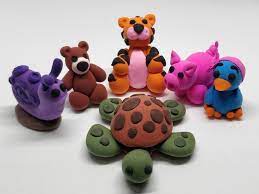Weight Loss Programs for Kids Powerful Tips That Really Work
For many families, helping children find a healthy balance in life can be challenging. Long school days, screen time, busy parents, and fast food all play a role in shaping kids’ routines. That’s why more parents are exploring weight loss programs for kids not for appearance, but to support better energy, sleep, and self-confidence.
It’s not about strict diets or pressure. It’s about simple steps that build good habits without shame or stress. The best programs are the ones that fit into daily life, making it easier for children to feel strong, active, and positive.
What Makes a Program Work?
Not all programs are the same. Some may be too strict, while others don’t include the whole family. The most effective approaches share these qualities:
- They are child-friendly — no calorie counting or food rules
- They involve the family — changes happen together
- They are fun — because kids learn better when they enjoy it
- They focus on habits — not numbers on a scale
Below is a simple chart comparing what works and what usually doesn’t.
Table: What Works vs. What Doesn’t
| Works Well | Doesn’t Work |
|---|---|
| Walking or dancing with family | Forcing kids to do gym-style workouts |
| Sharing regular meals at home | Skipping meals to “cut calories” |
| Letting kids choose veggies/fruits | Hiding healthy food in meals |
| Cooking together on weekends | Ordering takeout several times a week |
| Focusing on energy and fun | Talking about weight or size |
Small, regular actions have more impact than big changes that don’t last.
The Role of Food
Nutrition doesn’t have to be complicated. Children need fuel that helps them grow, learn, and stay active. That usually means eating food that is close to its natural form fruits, vegetables, whole grains, lean proteins, and healthy fats.
Instead of labeling foods as “good” or “bad,” talk about them as “everyday foods” and “sometimes foods.” This takes away guilt and helps kids make better choices.
Sample Day: Easy Meal Ideas
| Time | Example Meal or Snack |
|---|---|
| Breakfast | Scrambled eggs with toast and orange slices |
| Snack | Yogurt with berries |
| Lunch | Turkey sandwich on whole wheat bread, carrot sticks |
| Snack | Apple and a slice of cheese |
| Dinner | Grilled chicken, rice, broccoli |
| Treat (2x/week) | A scoop of ice cream or small cookie |
Remember, the goal isn’t to remove fun foods, but to bring in balance.
Movement That Feels Like Play
Kids are more likely to stay active when it feels like fun not exercise. Running around the yard, playing tag, walking the dog, or dancing to a song before homework can all support a healthy body.
If your child isn’t into sports, that’s okay. There are many other ways to move.
Fun Movement Ideas by Age Group
| Age | Ideas That Work Well |
|---|---|
| 5–7 years | Jump rope, animal walks, scavenger hunts |
| 8–10 years | Bike rides, soccer at the park, obstacle courses |
| 11–13 years | Dance videos, walking challenges, rollerblading |
| 14+ years | Hiking, group fitness, swimming, volunteering |
Let kids help choose the activity. When they feel involved, they stick with it.
A Look at Family Routines
The biggest changes happen not in short-term programs but in long-term routines. How a family eats, moves, and handles stress shapes a child’s health more than any plan ever could.
Here are some routine-based ideas that many parents have found useful:
| Routine Change | Why It Helps |
|---|---|
| Eating together without screens | Builds connection and better eating |
| Choosing snacks together | Gives kids a sense of control |
| Planning weekends with activity time | Keeps kids active and social |
| Setting bedtime limits on screens | Improves sleep and reduces late snacking |
These are changes that support the child gently, without making them feel different or punished.
You may also read: Top Benefits of Center-Based ABA Therapy for Children with Autism
When to Use a Program
Sometimes, even with strong home support, kids need outside help. This is where structured weight loss programs for kids may be a good option. The best programs offer:
- A mix of nutrition education, movement, and goal setting
- Involvement from parents or caregivers
- A focus on mental well-being as well as physical health
It’s helpful to avoid any program that:
- Measures success only by weight loss
- Uses shame or strict rules
- Promotes products, supplements, or extreme diets
Instead, programs should focus on building confidence, understanding food, and enjoying movement.
Mental and Emotional Support
It’s important to support the whole child not just their body. Children might feel embarrassed, left out, or confused about changes to food or movement. That’s why your tone and attitude matter more than the food itself.
Tips for Encouraging Positivity:
- Use words like “strong,” “fast,” or “full of energy” instead of “thin” or “fit”
- Ask how their body feels after play or a good meal
- Praise effort, not results (“You tried a new veggie!” or “You walked a lot today!”)
This helps kids build a strong, respectful relationship with themselves.
Real-Life Success Patterns
Real results come from patience. Families that focus on gentle changes and repeat small steps often see better health, even without large shifts in weight.
| Family Story | Small Changes That Worked |
|---|---|
| The Jacksons (3 kids) | Switched to fruit as dessert on weekdays |
| Single dad and 10-year-old son | Biked together every Saturday morning |
| Grandma raising two grandkids | Added veggie stir-fry twice a week |
| Mom and teen daughter | Did short yoga videos together at night |
There’s no single “right” way. The best pattern is the one that fits your family.
Final Thoughts
Helping kids grow up feeling strong, active, and confident takes time and support. Whether it’s a new snack idea, a shared walk, or joining a group class, every step counts.
The most successful weight loss programs for kids are the ones that meet children where they are, make them feel heard, and focus on steady, positive changes. These programs are not about perfection. They’re about creating a better rhythm that supports lifelong health.
Start with kindness. Add small habits. Involve the whole family. That’s the formula that really works.













